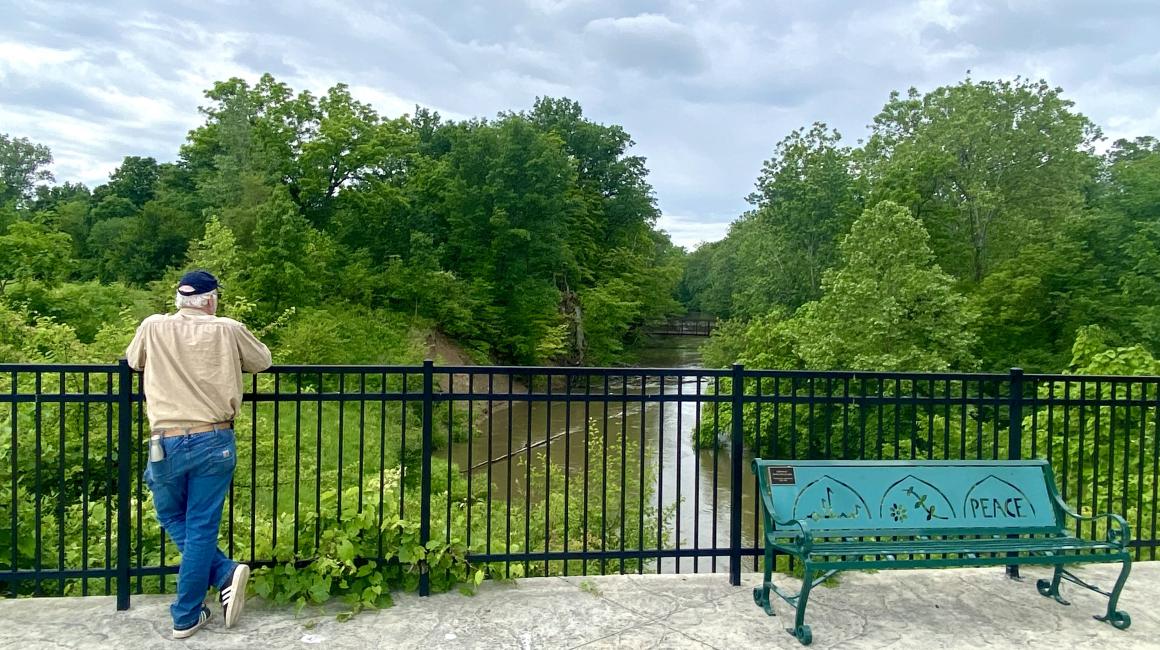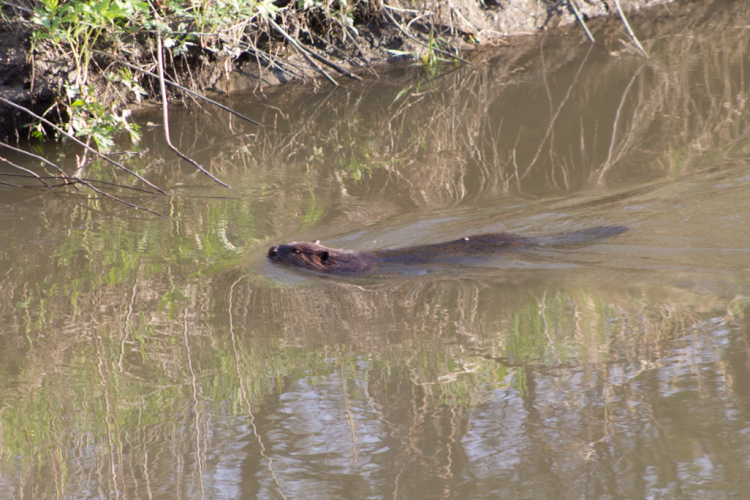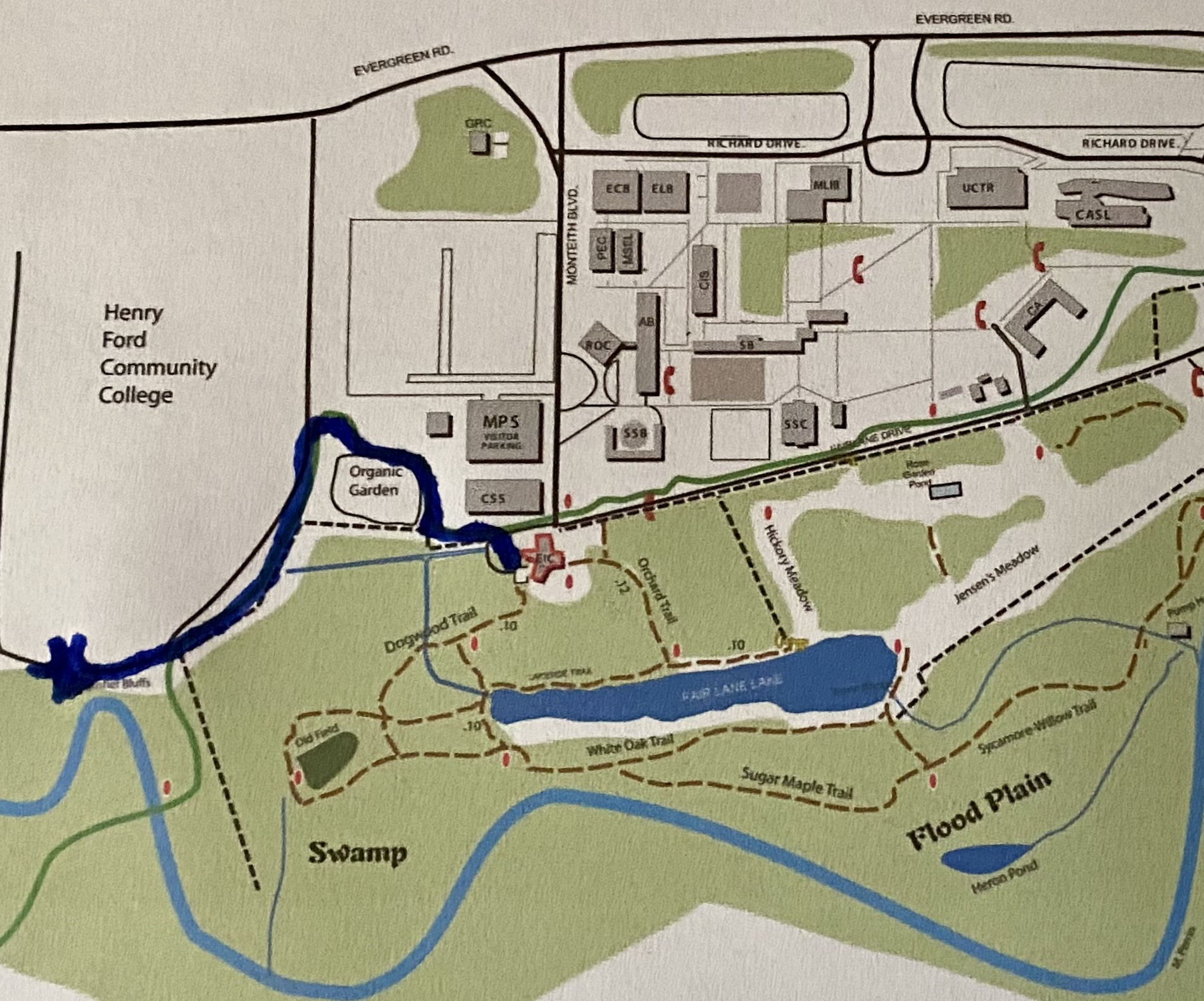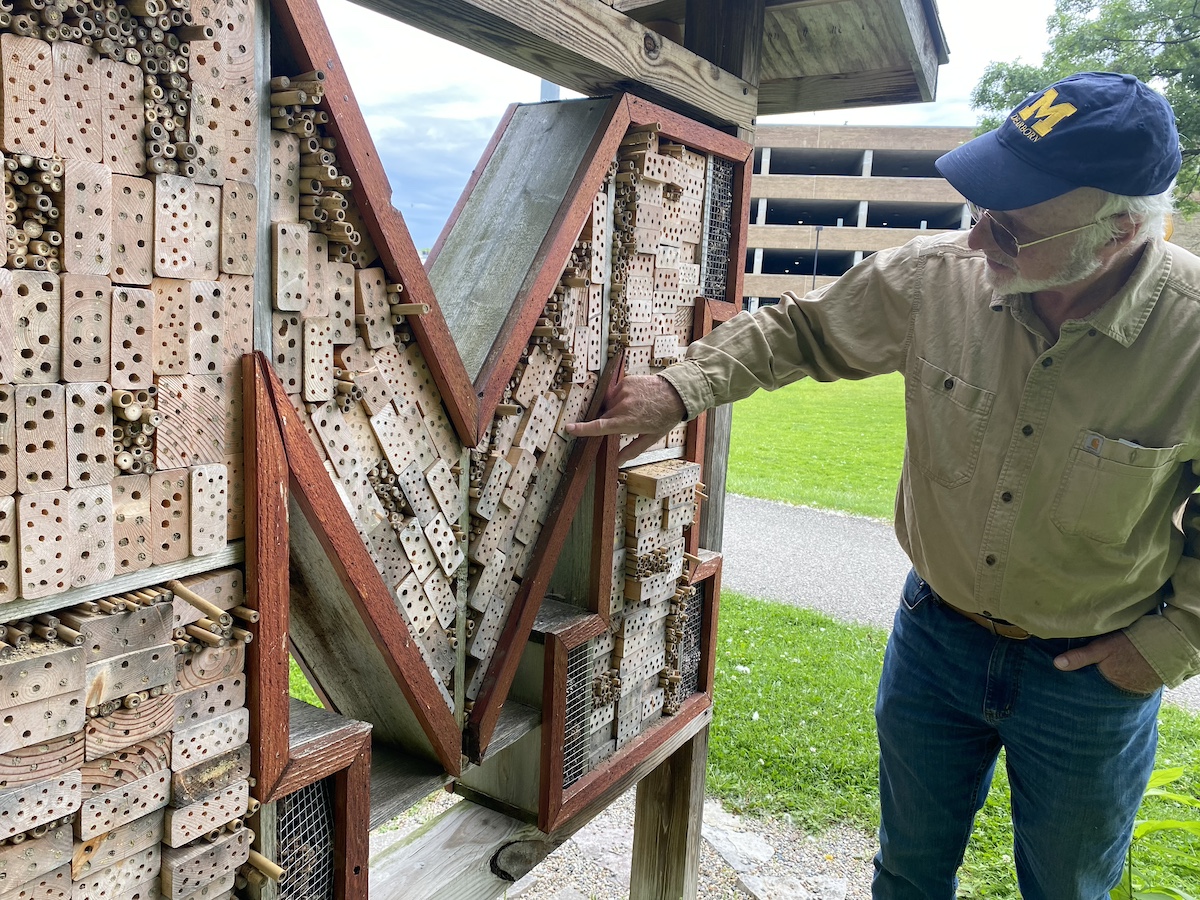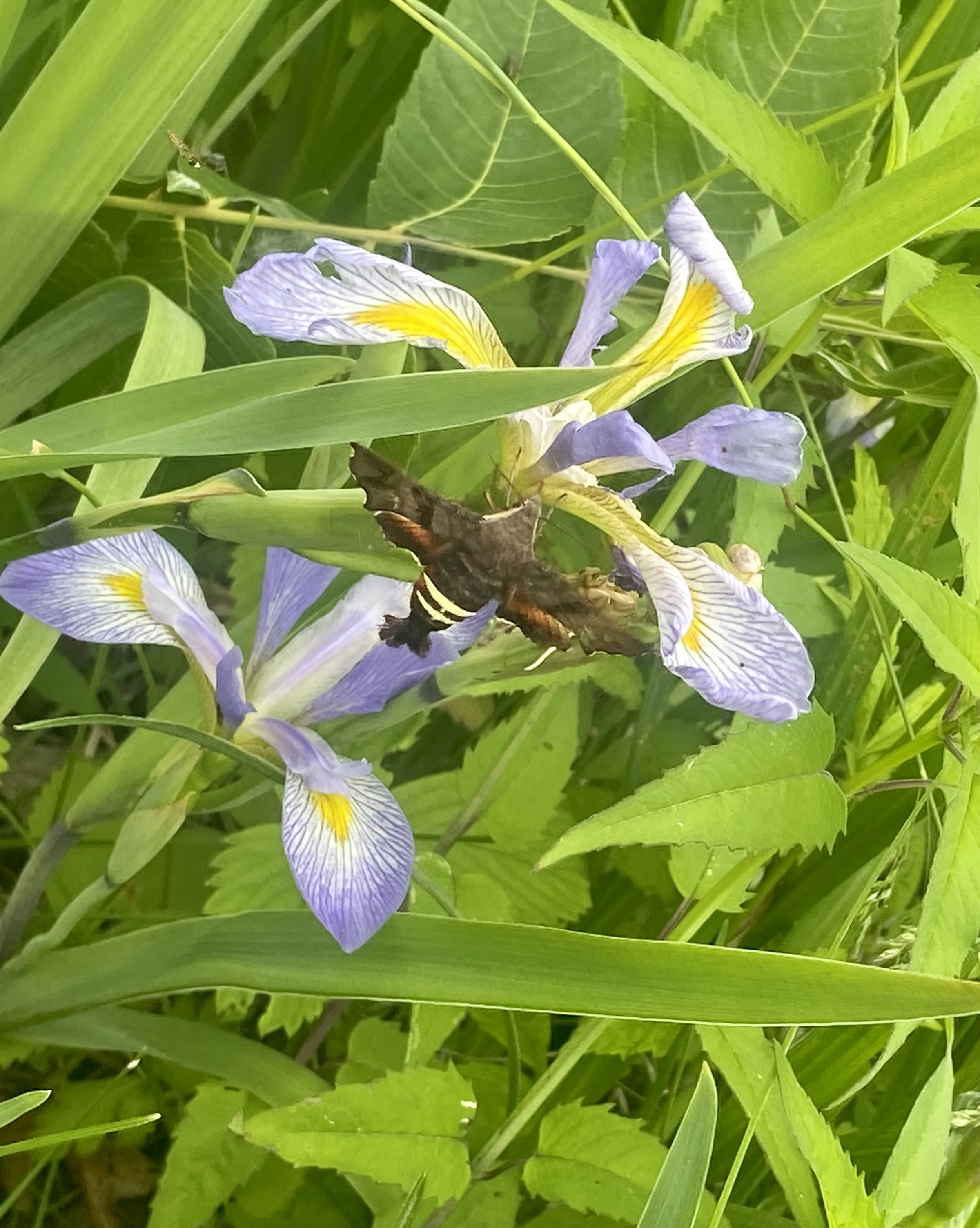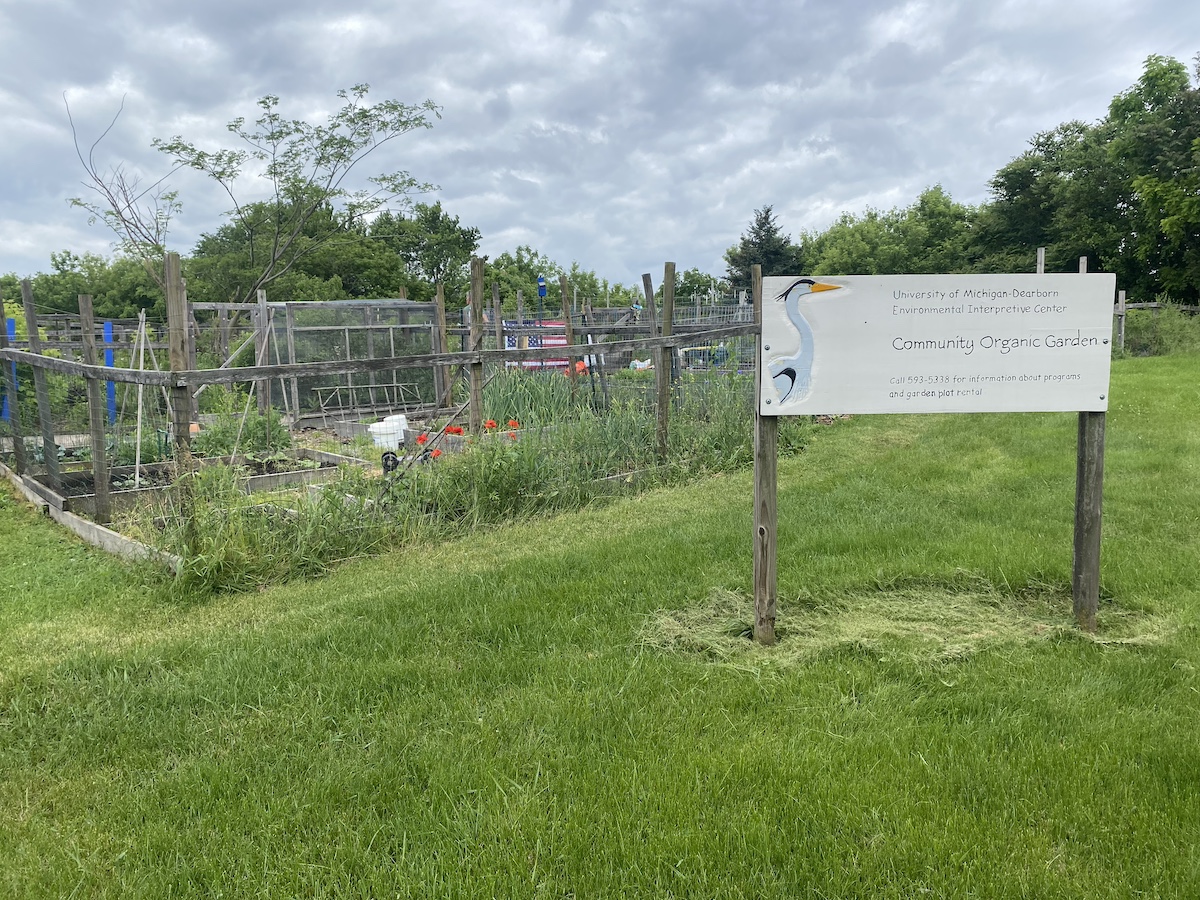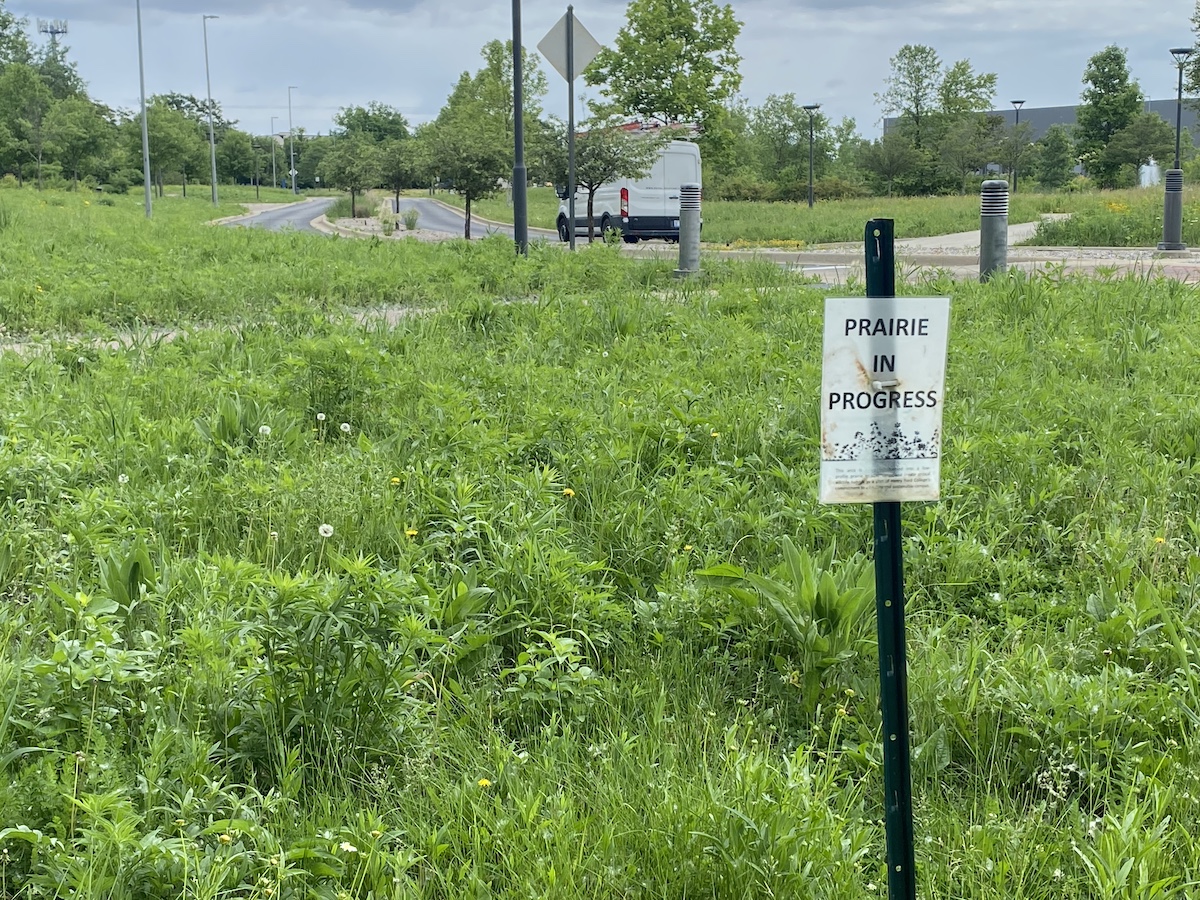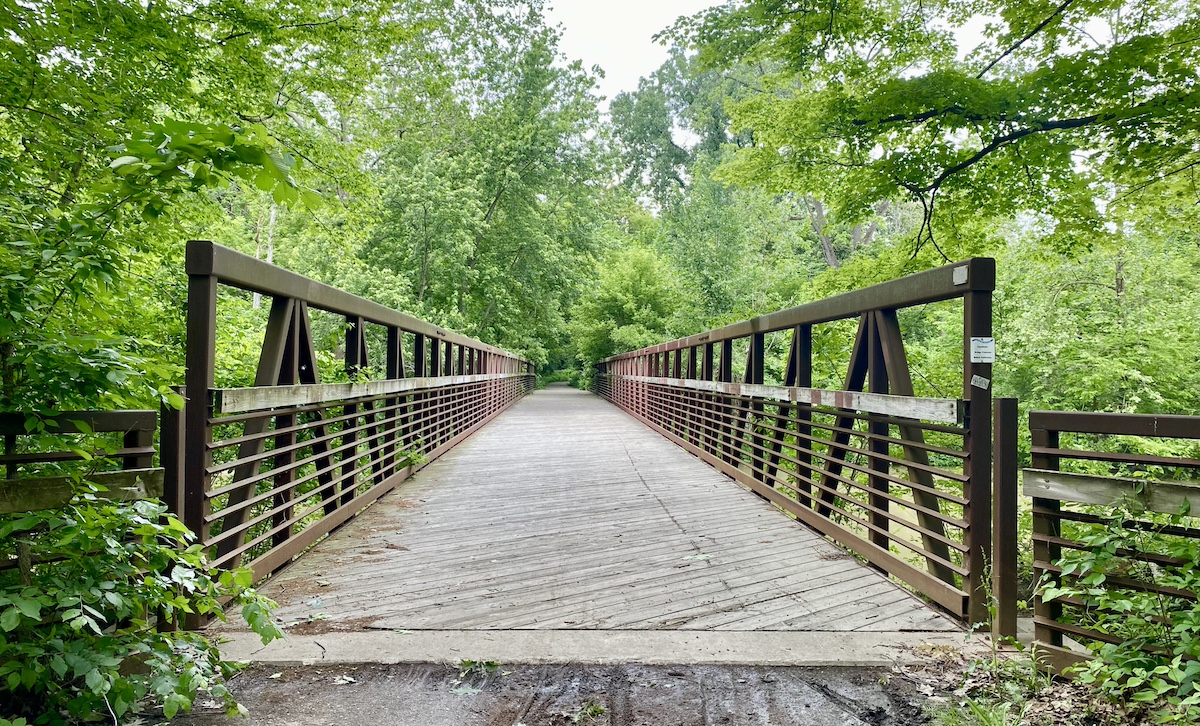The northside bridge
There’s a red wooden bridge near campus that joins the gateway trail to the north, leading to Hines Drive and continuing to Northville. It connects the two-mile Rouge River greenway to the 17.5-mile Hines Park Trail. “Not only is it great for wildlife, it’s nice for us too. People bike and walk here now, but — until the trail was put in — this area was a bit tucked away,” Simek says. “Walking here is good for mental and physical health and a nice reminder of how busy the wildlife is around us. Compared to what I remember from the 1980s, the river is making a comeback. People can see and experience how sustainability efforts are making a big difference.”
Looking down from the bridge, there are wood duck families, beavers and blue-and-white Kingfisher birds. “The Kingfishers dig into the river’s exposed clay bank to create cavities for their nests,” he says. “You can see Kingfisher Bluff from here — that’s probably how it got its name.”
Speaking of Kingfisher Bluff, the pictured spot at the top of the article that Simek is enjoying, it was a $1.5 million project funded through grant money from the Clean Michigan Initiative and the Wayne County Rouge Program Office. The remediation project stabilized the river’s bank, restored the habitat and created an observation deck. “They really did a nice job. I see a better present and a healthier future when I stand here. This place is an oasis in so many ways.”
Reporter will feature a trail and the insights of UM-Dearborn’s EIC staff each month of the summer — the next one will run July 9. Read the May edition.
See something on your walk that you're curious about? Snap a photo and send it to EIC's Laura Mallard at [email protected] for answers and to have your finds possibly show up on EIC social media.
Upcoming walks
Birding by Ear and Beyond
June 8, 9 a.m., EIC.
Focused on bird nests, Birding by Ear and Beyond is open to all people who are visually impaired, along with friends and family.
Nature Story Time
June 13, 4 p.m., EIC. Register for this program.
For this family event that’s best for children ages 7 and under, there’s music and bubbles, nature-themed books, crafts or activities — and a nature walk.
Nature Walks for Mental Health
June 19, 1:30 p.m.. EIC. Register for this program.
During this special Juneteenth event, you can relax, unwind and get outside, with brief guided meditations and 45-minute nature walks.
Story by Sarah Tuxbury.
